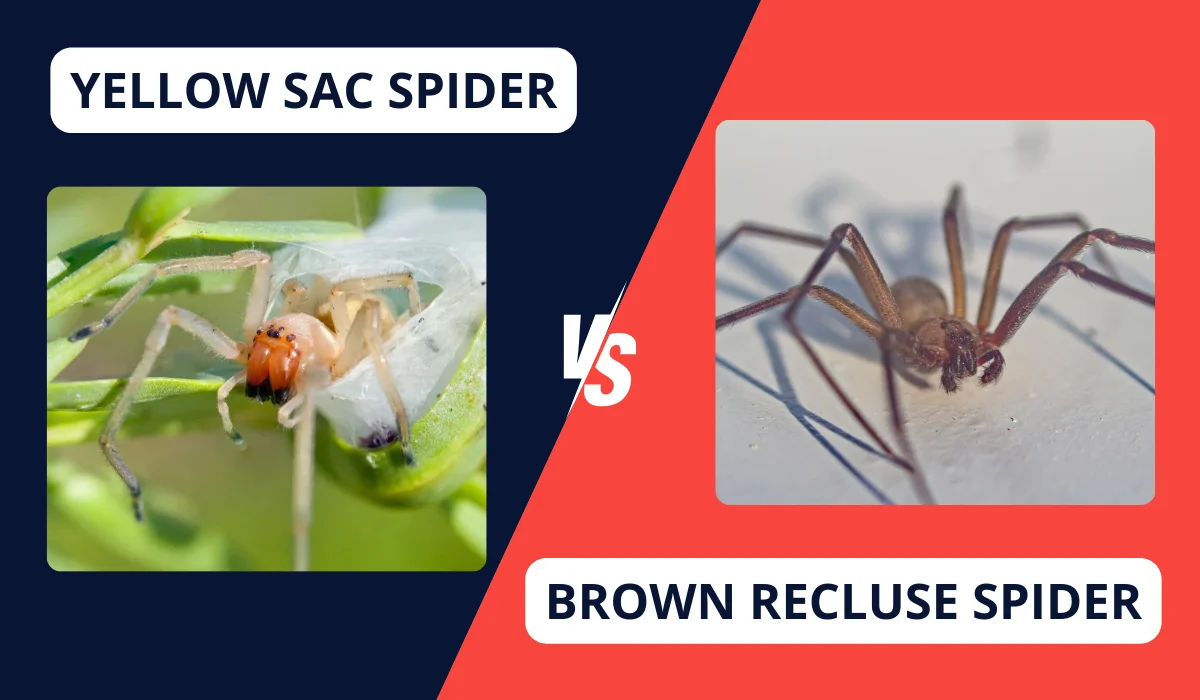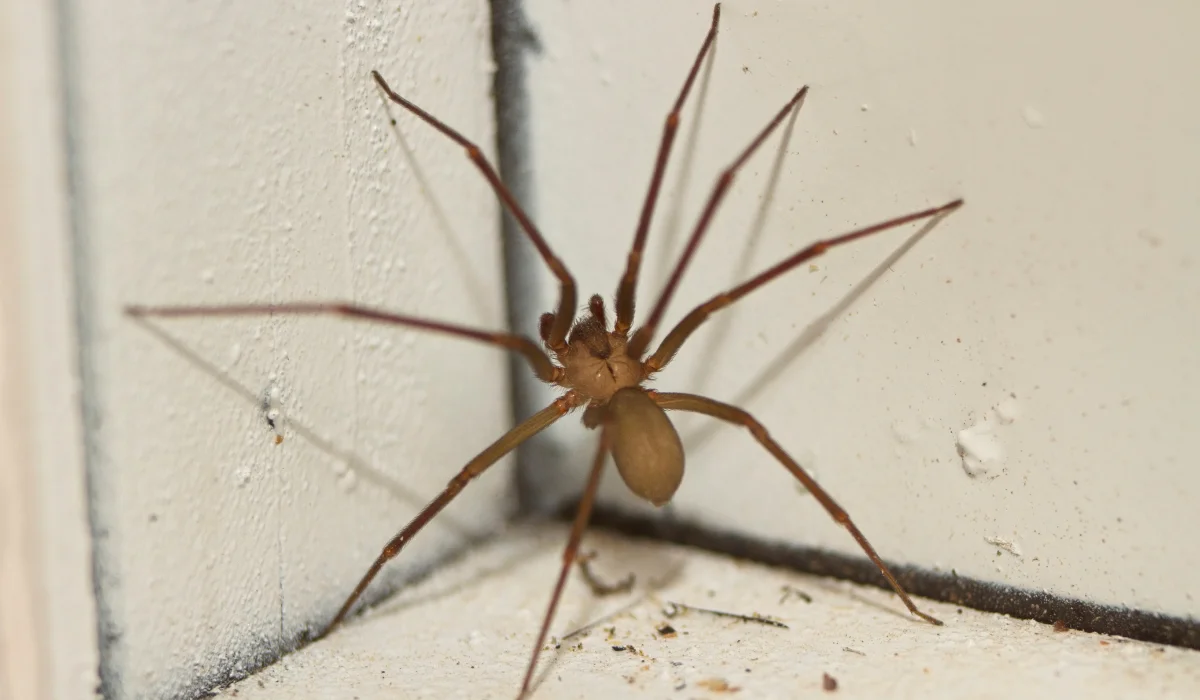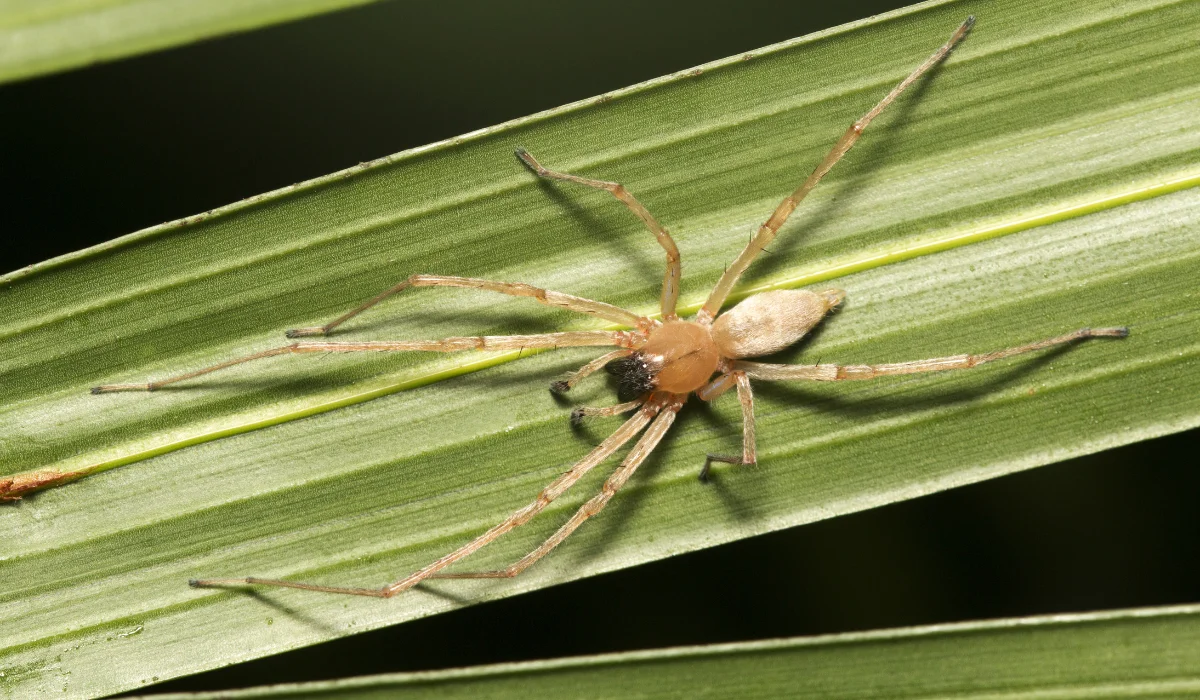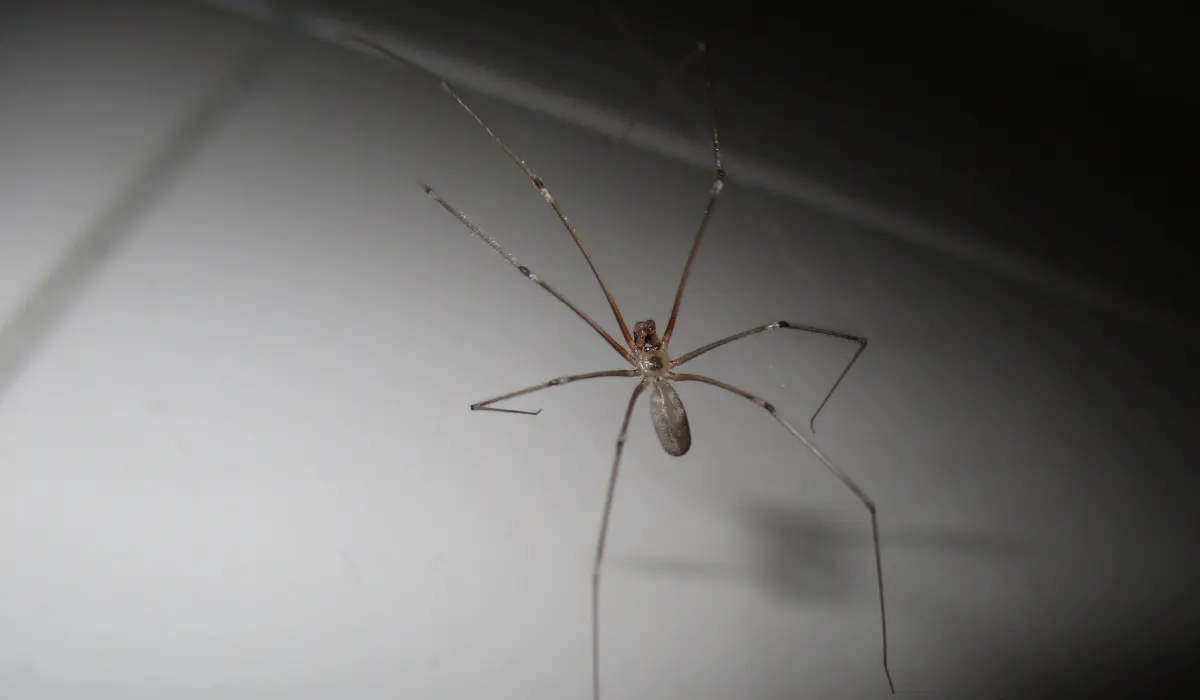Ever seen a small, light-colored spider on your wall and wondered if it was dangerous?
Many people mistake yellow sac spiders for brown recluse spiders because they look alike. But while they have some similarities, they’re actually quite different—especially when it comes to their bites.
So, how can you tell them apart?
And if one bites you, should you be worried?
Key Takeaways
- Yellow sac spiders are pale yellow with no major markings, while brown recluses are brown with a violin-shaped marking.
- A yellow sac spider bite causes mild pain and swelling, but a brown recluse bite can lead to serious wounds.
- A clean and clutter-free home with sealed cracks helps prevent both yellow sacs and brown recluse spiders.
- Multiple spiders or egg sacs indoors could mean an infestation, and pest control can help remove them.
YELLOW SAC SPIDER VS. BROWN RECLUSE SPIDER: KEY DIFFERENCES

If you’re unsure whether the type of spider you’ve spotted is a yellow sac spider or a brown recluse, this side-by-side comparison can help.
Here’s how they compare:
| Features | Yellow Sac Spider | Brown Recluse Spider |
|---|---|---|
| Color | Pale yellow to light brown | Light brown to dark brown |
| Size | Small, about the size of a nickel | Larger, about the size of a quarter |
| Legs | Long legs | Long, but slightly thicker |
| Distinct Markings | No major markings | Violin-shaped marking on cephalothorax |
| Webbing | Silk sacs in crevices | No web; hides in dark areas |
| Preferred Food | Small insects, including spiderlings | Small insects, including cockroaches and crickets |
| Preferred Habitat | Indoors, window sills, ceilings | Basements, woodpiles, leaf litter, storage spaces |
| Geographic Range | North America, Europe | Central and Southern U.S. |
Are Yellow Sac Spider Bites Dangerous?
The yellow sac spider is a small spider species that belongs to the Cheiracanthium genus. The two most common types in North America are Cheiracanthium inclusum and Cheiracanthium mildei.
Its bite can feel like a bee sting. It may cause pain, redness, and swelling, but it usually heals on its own.
In rare cases, the bite can lead to necrotic lesions (areas of dead human skin), but this is much less common than with brown recluse bites.
Most of the time, yellow sac spider bites do not require medical attention.
Are Brown Recluse Bites Dangerous?
The brown recluse spider is well known for its venomous bite. Unlike the Southern house spiders or wolf spiders, they are not aggressive and usually bite only if they feel trapped.
Its bite can lead to necrosis, where the tissue around the bite site starts to die. Some bites heal quickly, but others develop into painful bites with open wounds that take weeks to heal.
If you suspect a brown recluse bite, it’s best to seek medical attention, especially if the area becomes infected or worsens over time.
HOW TO PREVENT A SPIDER INFESTATION
Since both of these arthropods prefer hidden areas, keeping your home clean and well-sealed can help prevent an infestation.
- Seal cracks and crevices around doors, windows, and baseboards.
- Keep your home clutter-free, especially in basements, attics, and storage areas.
- Check and shake out clothing or shoes before wearing them if they’ve been stored in dark spaces.
- Remove webs and silk sacs regularly, especially from silken retreats like corners of walls and ceilings.
WHEN TO CALL PEST CONTROL
If you see multiple spiders or egg sacs in your home, especially brown recluses, you might have an infestation. A professional exterminator can help identify and remove them before they become a bigger problem.
At LaJaunie’s Pest Control, we specialize in keeping Louisiana homes spider-free. Whether you’re dealing with yellow sac spiders, brown recluses, black widow spiders, hobo spiders, cellar spiders, or other arachnids, our team is ready to help.
Need an expert to take care of your spider problem? Call us today!
 By: LaJaunie's Pest Control
By: LaJaunie's Pest Control 


